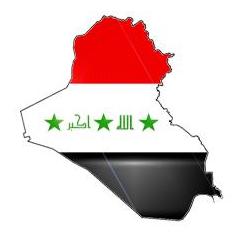
© Unknown
Halabja (pop. 80,000) is a small Kurdish city in northern Iraq. On Wednesday, the
Star reminded readers that Saddam Hussein's Iraqi army killed 5,000 Kurds in a 1988 chemical weapons attack on Halabja near the end of a bloody, eight-year war with Iran.
The statement that Saddam was responsible for gassing the Kurds - his own people - was straightforward.
Indeed, U.S. President George W. Bush has used similar language about the disaster at Halabja in making a case for a military strike to oust Saddam.
Yet the
Star also reported, in a Jan. 31 Opinion page column, that there's reason to believe the story about Saddam "gassing his own people" at Halabja may not even be true.
Curious about those contradictory reports, and prodded by
Star reader Bill Hynes, the ombud decided to examine how this paper covered the Halabja story 15 years ago, when Washington was tilting toward Saddam's side in the Iran-Iraq war.
The Star's early coverage was skimpy. I found no breaking news story about the March 16, 1988 gas attack on the city.
But four days later, a Reuters News Agency dispatch (filed from Cyprus) said Kurds, fighting on the Iranian side, had managed to seize Halabja and nearby villages "where Iran has accused Iraq of using chemical weapons against Kurds."
Two days later, Reuters reported, Iran was alleging that 5,000 Kurds were killed by chemical bombs dropped on Halabja by the Iraqi Air Force.
Iranian officials put injured Iraqi civilians on display to back up their charges. An Iranian doctor said mustard gas and "some agent causing long-term damage" had been deployed.
Burn victim Ahmad Karim, 58, a street vendor from Halabja, told a reporter: "We saw the (Iraqi) planes come and use chemical bombs. I smelled something like insecticide."
Two weeks later, the fog of war over Halabja thickened a little when the
Star ran a Reuters story saying a United Nations team had examined Iraqi and Iranian civilians who had been victims of mustard gas and nerve gas.
"But the two-man team did not say how or by whom the weapons had been used," the Reuters story said.
It explained that Iraq and Iran were accusing each other of using poison gas in violation of the 1925 Geneva Protocol against chemical weapons.
In September, 1988, the
Star quoted an unnamed U.N. official as saying the Security Council chose to condemn the use of gas in the Iran-Iraq war rather than finger Iraq, generally believed to have lost the war with Iran.
The same story said Iraq's claims that Iran also had used chemical weapons "have not been verified."
Buried in that story by freelancer Trevor Rowe was an intriguing piece of information. Rowe reported the Iraqi forces had attacked Halabja when it "was occupied by Iranian troops. Five thousand Kurdish civilians were reportedly killed."
Let's fast-forward to Jan. 31 of this year, when
The New York Times published an opinion piece by Stephen C. Pelletiere, the CIA's senior political analyst on Iraq during the 1980s.
In the article, Pelletiere said the only thing known for certain was that "Kurds were bombarded with poison gas that day at Halabja. We cannot say with any certainty that Iraqi chemical weapons killed the Kurds."
Pelletiere said the gassing occurred during a battle between Iraqis and Iranians.
"Iraq used chemical weapons to try to kill Iranians who had seized the town ... The Kurdish civilians who died had the misfortune to be caught up in that exchange. But they were not Iraq's main target," he wrote.
The former CIA official revealed that immediately after the battle the U.S. Defense Intelligence Agency investigated and produced a classified report that said it was Iranian gas that killed the Kurds.Both sides used gas at Halabja, Pelletiere suggested.
"The condition of the dead Kurds' bodies however, indicated they had been killed with a blood agent - that is, a cyanide-based gas - which Iran was known to use. The Iraqis, who are thought to have used mustard gas in the battle, are not known to have possessed blood agents at the time."
"A War Crime Or an Act of War?" was the way
The Times' headline writer neatly summed up Pelletiere's argument.
No doubt, Saddam has mistreated Kurds during his rule. But it's misleading to say, so simply and without context, that he killed his own people by gassing 5,000 Kurds at Halabja.
The fog of war that enveloped the battle at Halabja in 1988 never really lifted. With a new war threatening in Iraq, it's coming back stronger than ever.
Journalists risking their lives to cover an American-led attack on Iraq would face many obvious obstacles in trying to get at the truth.
In light of that, editors need to consider assigning staff back home to do reality checks on claims and counter-claims made in the fog of war.
As our retrospective on the Halabja story suggests, the bang-bang coverage - gripping though it may be - may not be enough to get the job done.
Source: The Toronto Star
. . . returning US soldiers recounting orders to set oil fields alight at the war's 'end.' There were several such stories, all similar and all from different individuals.
'The fog of war' indeed . . .